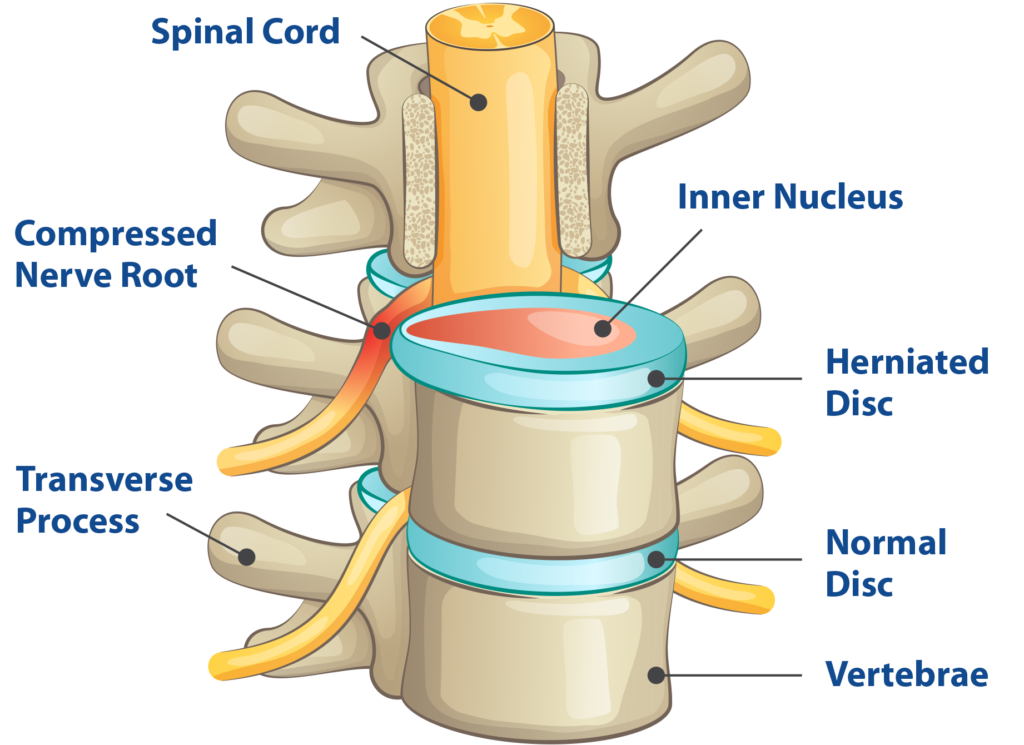Articles by Laxmaiah Manchikanti, MD
and Mahendra Sanapati, MD

What is Disc Herniation?
The bones in our spine are called vertebrae. They are separated from each other by discs which are like jelly donuts and act like cushions between the bones.
Not only can these discs be a source of pain, they can also cause pain by pressing up against a nerve. Various levels of disc displacement are: disc bulging, disc protrusion, disc herniation, and disc extrusion.

A bulging disc occurs when the tough outer part of the disc, called the annulus, compresses and squeezes out.
A herniated disc, also called a ruptured disc, is when the inner nucleus leaks through a crack in the annulus. Normal aging or an injury can cause either of these to happen, but they are treatable conditions.
All these medical terms basically mean that the disc is sticking out beyond where it is supposed to be. The nerves are irritated due to pressure or the irritating chemicals released from the disc.
An Interventional Pain Physician can make the diagnosis based on your history, physical examination, and radiologic findings, and also treat appropriately.
